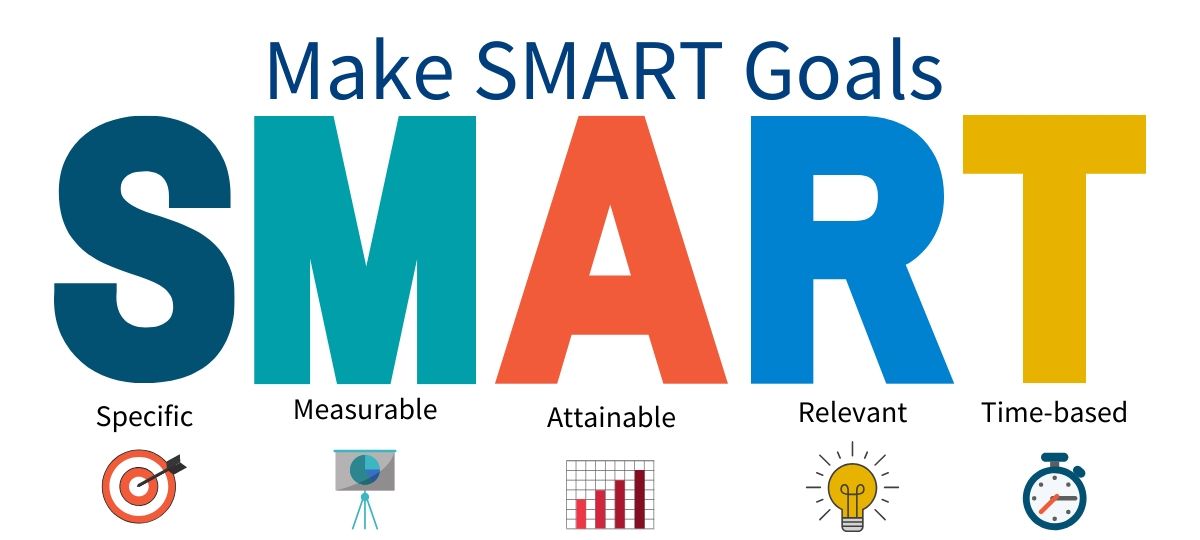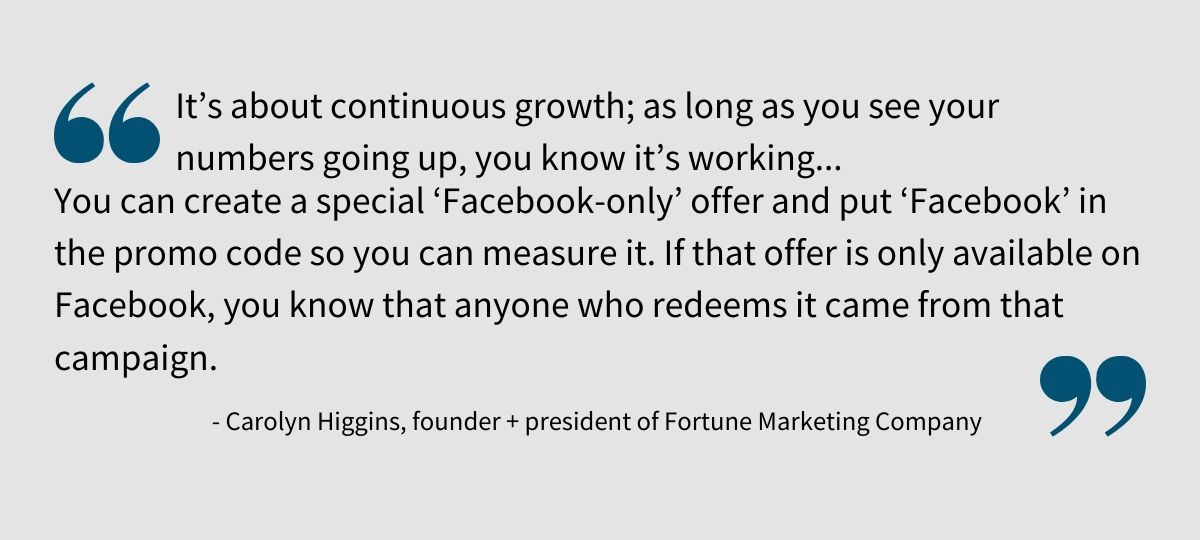Please note our holiday hours of 9 a.m. - 5 p.m. Central Time through January 2. We are closed on January 1. Happy New Year!
Measure Your Massage Business Marketing
Before you spend another cent on marketing your massage therapy services, set yourself up for success with a plan to set, implement and track your goals.
“Marketing is how you get customers,” explains Margo Aaron, founder of Argotics, a Jersey City, New Jersey-based marketing consultancy that specializes in entrepreneurial clients.
“Unfortunately, you have limited resources to do it—especially if you’re a small business owner where it might only be you running the entire thing. So, spending your time on activities that don’t work is a big problem. It wastes time, money and energy, and it ultimately could lead to your demise.”
It all comes down to the old, but true, business adage: You can’t manage what you don’t measure.
“The reason we invest in marketing is because we want to see results,” echoes Carolyn Higgins, founder, and president of Fortune Marketing Company, a marketing consultancy based in Walnut Creek, Calif.

In large corporations, results are measured as “return on investment,” or ROI, which is typically calculated using sophisticated formulas with complex variables such as “net operating income,” “average operating assets,” “customer lifetime value” and “operating profit margin,” just to name a few. In small businesses, however, the best approach to determining ROI is usually the simplest.
“When my clients want to implement a marketing tactic, I ask them to think about how much time, money and energy it will cost, and how much payoff they would get.”
“I use the word ‘payoff’ instead of ‘ROI,’” says Rockville, Maryland-based marketing consultant Evan Leepson, author of Critical Connections: The Step-by-Step Guide to Transform Your Business Through Referral Marketing.
According to Leepson, evaluating a given marketing effort’s payoff is as easy as keeping track of what you put in and comparing it to what you got out, then asking yourself, “Was it worth it?” These three steps will help you determine if it was.
1. Set a Marketing Goal
Before you can determine whether your marketing has paid off, you need to clearly define what you want to get out of it, according to Higgins. “Are you building your brand? Or are you expecting to get actual customers?” she asks. “Setting your expectations upfront will help you determine later if your investment was worth it.”
The best goals aren’t always monetary.
For instance, you might want to increase your number of repeat customers. Or, perhaps you want to sell more of a particular service. Maybe you want to target a new market, attracting more pregnant women for prenatal massages, or more businesspeople for neck and shoulder massages.
“I even have some clients whose goal is having more time off. They went into business for themselves so they could spend more time with their family, so success for them is marketing that doesn’t require them to invest a lot of time,” says Seattle-based business coach Karol Dixon de la O of FocalPoint Business Coaching.

Dixon de la O points out that the goal is explicit, realistic and has a deadline associated with it—all of which will make it easier to evaluate later whether you met your goal, and whether your marketing helped you do it. Either you doubled your clients by the end of the quarter, or you didn’t.
2. Make It Measurable
Once you’ve set a goal, you’ve got to make your marketing strategy quantifiable. How you do so will depend on which marketing channels and tactics you’ve chosen to pursue.
Print advertising
When you advertise in print—whether it’s an ad in your local newspaper, a flyer on a community bulletin board or a direct mail piece—it can be difficult to know if anyone’s actually seeing it.
To measure if they are, include a call to action and a unique promo code. You can offer customers who use the promo a discount, for example, a complimentary upgrade or a free gift.
“Asking the potential customer to use a phrase or code when they call for a discount isn’t perfect—not everyone who sees the ad will remember to use the code—but it will begin to help you pinpoint where your potential customers saw your ad and whether the spend was worth it,” Dixon de la O says.
The call to action doesn’t have to be claiming a discount or gift. It could be as simple as visiting your website and signing up for your email newsletter, in which case an easy way to measure results is creating a special landing page on your website where you send people who saw the ad.
It shouldn’t be your homepage, but rather a separate page created especially for your advertisement. Try using a landing page tool such as these or your own website platform:
- HubSpot
- LeadPages
- WordPress Landing Pages plugin for WordPress
Either way, using a free tool like Google Analytics to track your website traffic will allow you to see how many people visited your landing page, which will give you a sense for whether or not the ad is working.
AMTA Member Discount: 6 Ways to Market Your Massage Practice
Digital advertising
The same strategies that work for print advertising work for digital advertising, according to Higgins, who reiterates the importance of calls to action and landing pages.
Whether it’s a paid advertisement on Facebook, a pay-per-click ad on Google or a banner ad on a third-party website, most of your advertising should ask consumers to visit your website—again, via a special landing page—and complete a designated action, like downloading a piece of content.
“I recommend every business owner have some kind of download on their website, like ‘10 Tips for a Healthier Back’ or ‘10 Things You Should Ask Your Massage Therapist Before Your Next Appointment,’” states Higgins, who says downloads add value and can be easily tracked.
Resource: Downloadable Massage Client Education Resources
Social media marketing
If your goal is increasing awareness—making more people aware of your services—social media can be a good channel in which to invest, according to Higgins, who says quantifying social media exposure can be as easy as counting Facebook likes.
“It doesn’t do any good to spend five hours a week posting on Facebook if you only have 20 followers; you need to make an effort to build your following, because the bigger your numbers, the more things start snowballing,” she says. “Try to grow your following by at least 20 percent a year.”
Resource: Easily Offer Gift Certificates With This Downloadable Template
In addition to Facebook likes, you can track Facebook shares, Twitter followers, re-tweets or even YouTube views, if you have a YouTube channel.

Referral marketing
Referral marketing—promoting your business through word of mouth—can take many forms.
One is networking, according to Higgins, who says the easiest way to measure the fruits of networking is to keep track of how many “qualified leads”—people who actually seem interested in your services—you meet during networking events, and how many of them eventually turn into business, either directly or through referrals.
If you spend an hour networking every week but never generate any business, it’s probably not worth your time. If you get at least one new client every time you attend a mixer, however, attending more events may pay off.
Resource: Grow Your Practice: Marketing Plan Basics
To determine whether a new client is someone you met at a networking event or was referred by someone you met: ask.
“The No. 1 thing every business owner needs to do to measure their marketing ROI is to get in the habit of asking every single person who calls or comes in, ‘How did you hear about me?’” explains Higgins, who says the question can yield insights about virtually every marketing channel you’re in. “That’s the easiest thing any business owner can do to figure out where customers are hearing about them.”
Another way to engage in referral marketing is by partnering with other local businesses. For example, you could offer a discount to clients who are referred by another local health care provider.
You could quantify that type of partnership, Aaron says, by asking your partner to pass out flyers; customers receive the discount when they bring in the flyers, which you can count.
“Doing some very basic arithmetic—asking your partner how many flyers they passed out, and counting the number of people who bring them in—will help you see if it’s working.”
Email marketing
Email is one of the most measurable mediums there is, according to Aaron, who recommends sending newsletters and promotions using an email marketing platform like Constant Contact or MailChimp, which automatically tracks email performance to help you quantify your success.
AMTA Member Discount: Get Started With Email Marketing - Free for 60 Days
“Things you want to pay attention to are who’s opening it, which we call ‘open rate,’ and who’s clicking on it, which is called ‘click rate,’” Aaron explains. “You also want to know if anyone is forwarding it or unsubscribing. All this can be tracked, and over time you can tell if people are actually reading your emails.”
3. Track Your Progress
Quantifying your marketing is useless unless you’re also aggregating and analyzing the results. “It doesn’t matter that you’re collecting the information,” Aaron says. “You also have to spend some time—two or three hours a day, one day a week—looking at it, because that’s the only way you’ll know what to do with it.”
Because it allows you to keep a database of your customers, including information about how they heard about you and which marketing channels they use to engage with you, customer relationship management (CRM) software such as Salesforce, Insightly, Nimble or Zoho can be helpful, though not necessary.
“There a number of good CRM systems online that enable you to track everything. The simplest, though, is pencil and paper,” Dixon de la O says. “You can start with just a list of who your customers are when they come in, where they came from and how they interact with you. Then, at the end of the week or the end of the month, you can look at things and determine that this person who saw one of your YouTube videos made four appointments versus this person who heard about you on Facebook who only made one. If you want to get a little fancier, you can make an Excel spreadsheet and track it that way.”
Ultimately, the goal is to determine which marketing strategies are helping you achieve your goals, and which ones are distracting you from them.
“Your data will give you a roadmap to identify where there are problems so you can fix them. If you spent $400 on an ad but only made $25, that’s probably not a good place for you to be marketing. So, what else can you be doing, instead?” Aaron concludes. “Sometimes it raises more questions than answers, and that’s OK. Because that means there are new places you should be spending your time and money that will be more effective and will grow your business. You just have to find out what they are.”
This article by Matt Alderton was adapted from the summer 2016 issue of Massage Therapy Journal.